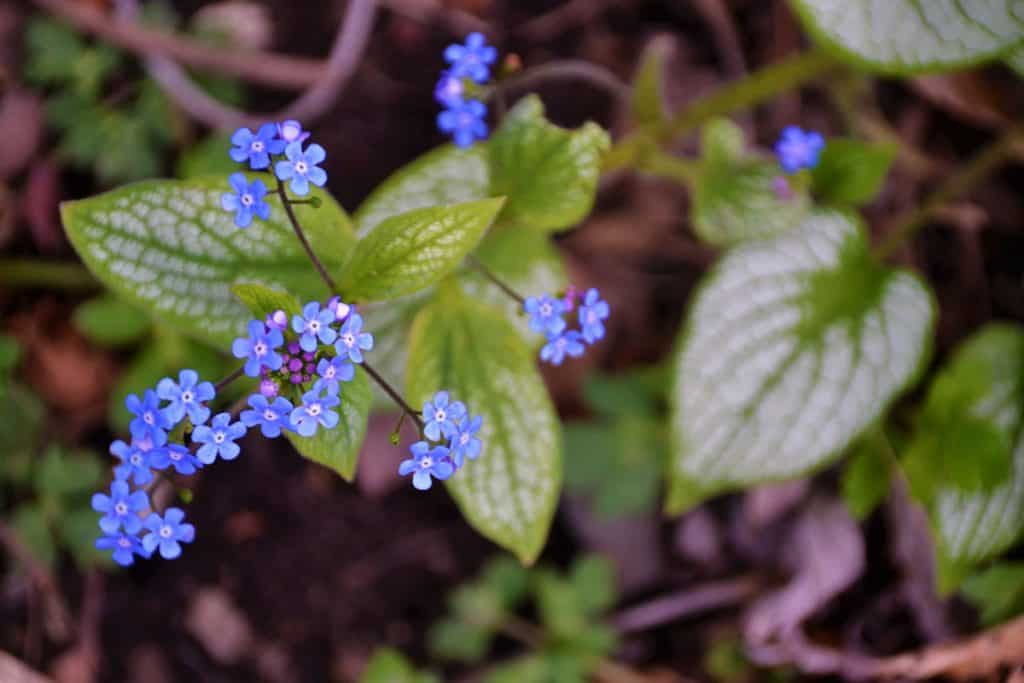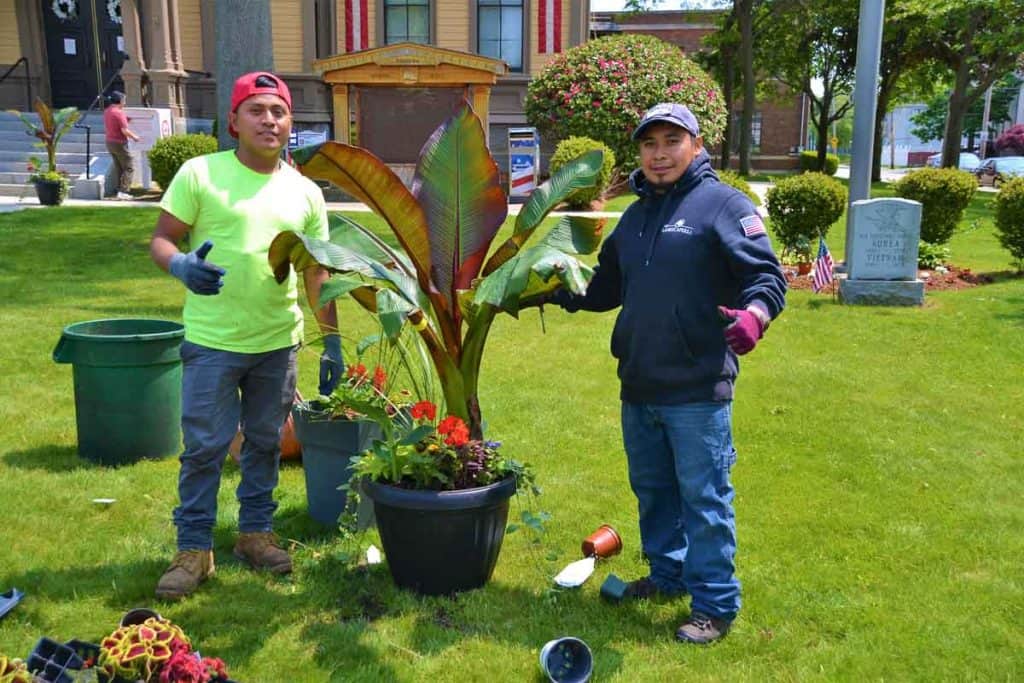Here’s what’s blooming in town this week to make your walks more enjoyable
Rachel Carson’s birthday is tomorrow, May 27. Most remembered for her book “Silent Spring,” which led to the banning of DDT and more scrutiny of pesticides and other chemicals’ effects on the natural world, she was a marine biologist who became a great advocate of conserving nature. At this peak time of spring, we especially appreciate some of her memorable words: “Those who dwell among the beauties and mysteries of the earth are never alone or weary of life.”
Birds are nesting in the trees and sometimes in some other surprising locations like hanging flower baskets. It makes sense to postpone pruning if you have observed a bird nesting in a tree or shrub until the babies have flown. Charles Zapolski in North Saugus has a charming tenant at his house this spring. He says, “Ruby the Robin has chosen a corner on the house to raise her family.”
Forget-me-not (Myosotis spp.) belongs to the Borage family (Boraginaceae). There are many stories about how it got its name, which is similar in many European languages. German and Dutch names for the plant translate to Forget Me Not, and No-Me-Olvides in Spanish means the same. Whatever its origin, the common name goes back centuries in most European countries. The Latin name, however, means mouse ear, referring to the size and shape of the leaf of several species. The one we are most familiar with is woodland forget-me-not (Myosotis sylvestris), which is a short-lived but prolifically self-seeding, sun-loving perennial. Many groups have historically used the flower as a symbol to remember those who have passed away, or who are missing or suffering. It can also mean loyalty and a “true blue” attachment in a romantic relationship. In World War I, it was the flower most often used to commemorate war veterans and added to Memorial Day bouquets. Poppies, especially red ones, because of the poem “In Flanders’ Fields” by Canadian soldier John McCrae in 1915, also became a Memorial Day symbol.
Chinese forget-me-not (Cynoglossum amabile) has very similar blossoms and is in the same family. It blooms somewhat later in the season. Siberian bugloss (Brunnera macrophylla) is another plant in the borage family with similar five-petalled blue flowers, but very different foliage. The leaves are heart shaped and deep green, although the variety ‘Jack Frost’ has silvery markings which add interest to the leaves from spring through fall. Siberian bugloss blooms in spring and frequently again in the fall, but in summer the main attraction is the foliage. These plants are among the true blue flowering perennials likely to be in bloom on Memorial Day every year.
Red, white and blue flowers are in great demand, especially between Memorial Day and Independence Day. This patriotic porch arrangement of annuals will keep blooming through summer. The front step holds red and purple million bells (Callibrachoa hybrids), since dark purple can often pass for deep blue, a color in short supply among flowers! The upper pot contains lobelia (one of the few annual flowers which is a true blue), white petunias and red verbena as well as pinwheels whirling in the wind. Memorial Day marks the “unofficial start of summer” and the time of year when we can reasonably expect to be frost free until fall, so annuals can be planted outside with confidence.
This is one of the busiest times of year for garden centers and nurseries, with people getting their gardens and yards ready for summer events, weddings and graduations as well as planning barbecues and anticipating good weather for outdoor activities. One morning this week, I went by and saw that the front gardens and walkway of Town Hall were being transformed with a delightful array of tropical plants and annuals, just in time for the Memorial Day activities this weekend.
Editor’s Note: Laura Eisener is a landscape design consultant who helps homeowners with landscape design, plant selection and placement of trees and shrubs, as well as perennials. She is a member of the Saugus Garden Club and offered to write a series of articles about “what’s blooming in town” shortly after the outbreak of the COVID-19 pandemic. She was inspired after seeing so many people taking up walking.






